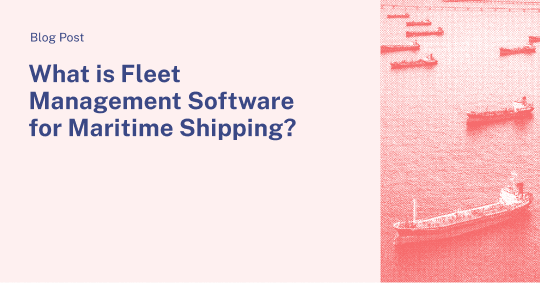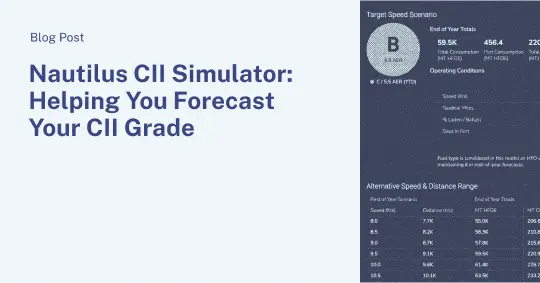What will 2021 look like in ocean shipping? Looking back at the last year, it’s easy to answer this question with a question: who really knows? If you asked me this question twelve months ago, I wouldn’t have guessed that a once-in-a-century pandemic would force us all to work from our homes, create a breeding ground for conspiracies and conflict, and ultimately drive the world economy to the brink of depression—only to see it rebound nearly as dramatically before tapering off with continued pandemic spread.
Yet as we look at ocean commerce broadly, the best prognostication comes from digging into the change that did happen to uncover the path of our industry over the next 12 months and beyond. At Nautilus, we saw three major trends—some certainly accelerated by the global shock of COVID-19—that, regardless of this year’s black swan events, will continue to drive the evolution of our industry in 2021 and beyond. We’re optimistic that the result will be better outcomes for everyone—every team member, every organization, and the entire global community that depends on ocean shipping every day.
Vessel operations: solving the original remote team challenge.
While many shoreside teams were thrust into working as remote teams—as most organizations were across broad swaths of our economy last year—it’s actually the case that ocean shipping has experience working through the original remote team challenge. In the days before satcom connections and high frequency data, firms had to run global operations in sync across businesses where significant teams (the vessel crew) were offline for much of their work. Our industry has for a long time developed a certain comfort level with that operating reality—there’s a trust and reliance upon autonomous and distributed decision making.
It’s been far more difficult to adjust to that reality for shoreside teams. Managers are accustomed to a butts-in-seats world, and transitioning to a remote environment rapidly made decision-making difficult in the early days of the pandemic. But as our industry always has, it adapted—managers increasingly rely on the tools of a modern remote workforce to drive transparency, accountability, and collaboration across teams. Core to that is having reliable, real-time insight into operations.
This portends tremendous potential for connecting the entire organization, finally solving the challenge of establishing closer collaboration between shoreside teams and crews. Ultimately, empowering crews with more information—about the commercial structure of a contract, the context of a voyage instruction, and a vessel’s relative performance across a fleet—is the way to achieve meaningful fuel savings and emissions reductions. The COVID crisis has created a need across teams for more rapid information enablement, which will have long-term benefits for the crew and business as a whole.
Counter-parties: embracing collaboration around data. (Gasp!)
Beyond the lack of empowered data-driven decision-making, a fundamental source of inefficiency in ocean shipping is misaligned incentives and data silos between the firm that owns the fuel bill for a voyage and the one that owns the vessel. We see this disparity produce inefficient outcomes in every segment and charter agreement type. Fundamentally, if there were a way to rationalize this type of counterparty collaboration, it would unlock massive fuel savings potential—perhaps even more than vessel optimization alone. But while efficient internal operations are a clear source of competitive advantage, the risk posed in the market by open collaboration has often been deemed too costly.
Historically we hear the same stories. Owners with vessels out on time charter (TC) don’t really care about fuel savings because there is not a contractual incentive for improved efficiency. Charterers are more interested in getting data to support performance claims than to drive more efficient operations. Tramp traders speed up to slow down because of the strange incentive structures that laycans and demurrage can create. But across the market, we can see the tide turning, and the economic benefit of sharing information to collaborate on better outcomes is beginning to outstrip the risk.
In 2020, for the first time in our history, we saw multiple counter-parties come together to collaborate around data in Nautilus Platform. The use case may vary based on vessel segment, but the core principle remains the same—empower the right team with the right information, and each party can achieve the full economic benefit of an optimization. The most obvious example is in a market like container shipping, where an owner can achieve all the benefits of fleet optimization, while the charterer can manage the voyage instructions—and both can engage without having data-sharing create performance claims risk. This has long been our vision at Nautilus, and as we look out at 2021, we believe it’s the type of wholesale market change needed to get our industry to the minimum level of fuel consumption and emissions.
Emissions: playing a leading role.
But what is driving our industry and the market toward minimized fuel consumption? Beyond the simple fact that less fuel creates a more efficient, effective business, the industry is beginning to embrace an overarching awareness of the need to reduce greenhouse gases that come from ships. We’ve seen this trend evolve over the last few years— IMO 2020/30/50, the Poseidon Principles, or initiatives like the Sea Cargo Charter all reflect this change in our industry. Each of these on their own isn’t enough to move the market, but the collective pressure they put on environmental impact and emissions reductions can’t be overstated.
It also seems to be the case that the turmoil of 2020 helped to lay bare structural challenges in society that require collective action to change them. More and more consumers are demanding that the businesses they buy from are responsible environmental stewards that take their carbon footprint into account. The collective power of all of these individuals and businesses making this shift has a tremendous impact up the value chain on ocean shipping. Combined with more intense national regulation of emissions that’s either occurring (e.g EU) or may occur soon (e.g. US), it’s creating an operating environment where emissions savings aren’t a nice-to-have line item in the annual report—but a priority business requirement and strategic imperative.
Given that new prioritization, we can see the future of a market come into view, one where emissions tracking at the granular cargo level becomes a necessity, so that attribution can be traced back to the source. While it tends to look like a premium service today, where buyers pay a premium for carbon intensity awareness and reduction, the same won’t be true in the coming years. Carbon trading and taxes are clearly on the horizon, and as the market establishes a true price for emissions, the economic calculus for charter agreements is sure to change, too. We can be sure it will rest upon trusted, reliable, and accurate data—about what was and wasn’t consumed and why—with precise metering back to each kilogram of CO2.
Continuing in 2021 and beyond.
These trends are sure to continue. Closer connection and collaboration of teams internally, no matter where they sit, is a necessity to drive data-driven decision-making. The same is true across businesses, as counter-parties strive to optimize their operations, and the status quo of arm’s-length, noon-based data sharing doesn’t suffice. Particularly in a world where emissions matter, emissions reductions matter even more, and every key stakeholder is investing in ways to reduce the carbon footprint of their supply chain.
At Nautilus, we have a lot of optimism about 2021 and the years to come because of this reality. While we’re still contending with the whipsawing COVID restrictions, the persistent humanitarian crisis around crew changes at sea, and the massive volatility we’re experiencing across every facet of life these days, it’s clear that these trends are here to stay. No matter what the unforeseen big stories are this year, our industry will adapt in its path forward as the backbone of global trade, and continue to manage its evolution towards a carbon-free future.


